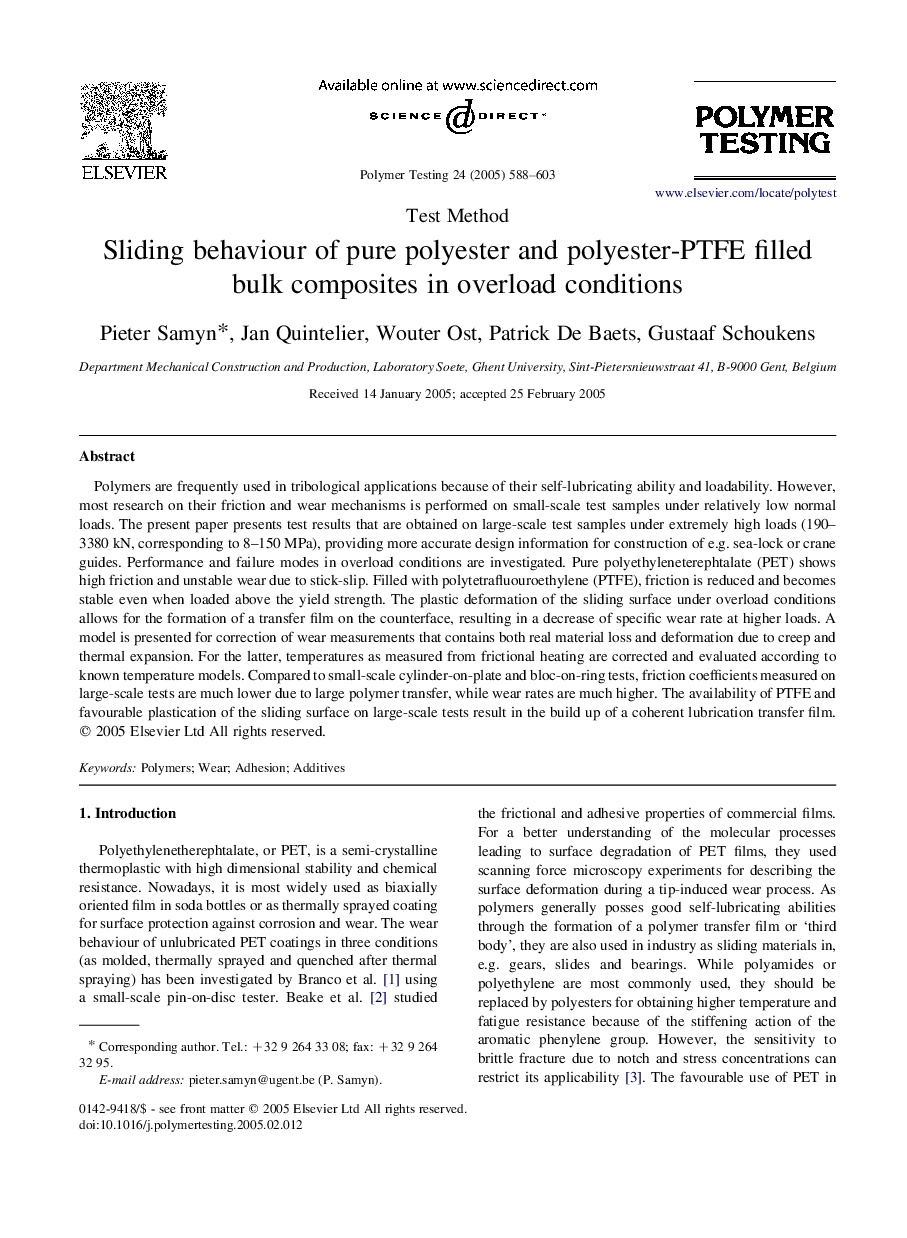| Article ID | Journal | Published Year | Pages | File Type |
|---|---|---|---|---|
| 9561787 | Polymer Testing | 2005 | 16 Pages |
Abstract
Polymers are frequently used in tribological applications because of their self-lubricating ability and loadability. However, most research on their friction and wear mechanisms is performed on small-scale test samples under relatively low normal loads. The present paper presents test results that are obtained on large-scale test samples under extremely high loads (190-3380Â kN, corresponding to 8-150Â MPa), providing more accurate design information for construction of e.g. sea-lock or crane guides. Performance and failure modes in overload conditions are investigated. Pure polyethyleneterephtalate (PET) shows high friction and unstable wear due to stick-slip. Filled with polytetrafluouroethylene (PTFE), friction is reduced and becomes stable even when loaded above the yield strength. The plastic deformation of the sliding surface under overload conditions allows for the formation of a transfer film on the counterface, resulting in a decrease of specific wear rate at higher loads. A model is presented for correction of wear measurements that contains both real material loss and deformation due to creep and thermal expansion. For the latter, temperatures as measured from frictional heating are corrected and evaluated according to known temperature models. Compared to small-scale cylinder-on-plate and bloc-on-ring tests, friction coefficients measured on large-scale tests are much lower due to large polymer transfer, while wear rates are much higher. The availability of PTFE and favourable plastication of the sliding surface on large-scale tests result in the build up of a coherent lubrication transfer film.
Related Topics
Physical Sciences and Engineering
Chemistry
Organic Chemistry
Authors
Pieter Samyn, Jan Quintelier, Wouter Ost, Patrick De Baets, Gustaaf Schoukens,
